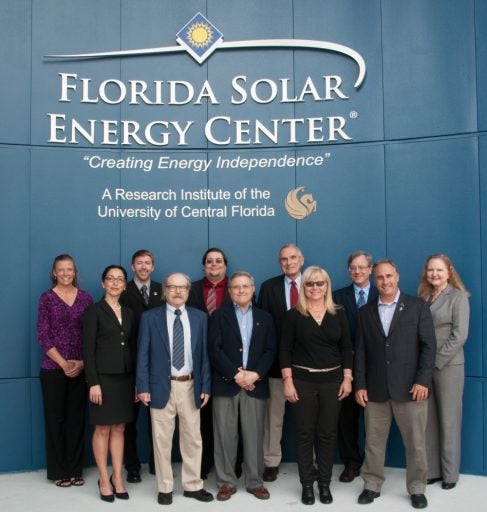UCF, together with NASA Kennedy Space Center and an early stage startup company HySense Technology, will be recognized by R&D Magazine later this year for developing and producing one of the top 100 innovations of the year. This award, known as the R&D 100, is widely regarded as the “Oscars of Invention,” whose past winners include the fax machine (1975) and HDTV (1998).
UCF researchers at the Florida Solar Energy Center began work on the breakthrough technology, a color-changing tape to visually detect hydrogen leaks, under a grant from NASA’s Glenn Research Center. Use of hydrogen as industrial feedstock in the chemical industry and fuel for space exploration carries the risk of a destructive accident if a hydrogen leak — able to burn at more than 5,000 degrees Fahrenheit when ignited with as little as a static spark — isn’t pinpointed and fixed quickly.
Potentially dangerous leaks in environments like a shuttle launch pad are hard to detect because hydrogen is odorless and colorless. By wrapping leak-susceptible areas with the new tape, leaks can be “seen” with a color change in the presence of hydrogen.
The color-changing concept for a visual cue was conceived by UCF’s Ali Raissi, Ph.D., who developed a chemochromic pigment (a type of pigment that changes color in the presence of a particular chemical) with a team of scientists including Nahid Mohajeri, Ph.D., who would later bring the invention to market.
The UCF team sent its original tape and pigment to NASA engineers who tested it for use on the launch pad, and incorporated the pigment into other materials including textiles used to make space suits.
The invention’s novelty is backed by four issued patents and five pending patent applications, including international applications. The university’s Office of Technology Transfer protects innovations developed by faculty and students by filing for patents that are ‘transferred’ to companies through licenses, thus bringing new products to market and attracting more funding to UCF.
UCF and NASA filed patents separately on aspects of the technology and signed an agreement to bundle and jointly commercialize the technology. This is a significant step toward making it available to the gamut of industries where hydrogen leaks pose a threat, including aerospace, power generation, and energy storage.
Searching for a partner to commercialize the technology, UCF found a match with Mohajeri, a member of the original research team, who founded HySense Technology and introduced the award-winning hydrogen detection tape to the market. On November 7, UCF, NASA Kennedy, and HySense will be recognized internationally at the R&D 100 banquet and award presentation held at the Bellagio in Las Vegas.
